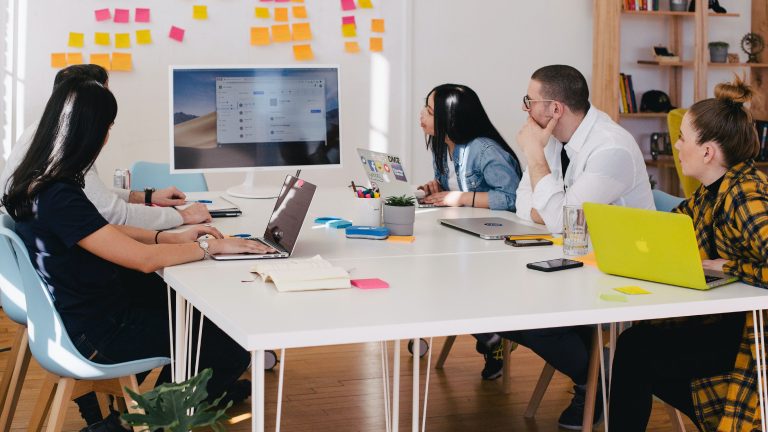Navigating the landscape of account-based marketing (ABM) comes with distinct challenges. These involve the identification of appropriate ABM metrics and the implementation of effective ABM reporting. To address these challenges, marketers can rely on the Three R Framework for account-based marketing attribution — a structured approach that offers a thorough assessment of ABM’s effectiveness.
The 3 Rs include:
- Relationships
- Reputation
- Revenue.
These elements function as a comprehensive measurement tool for various business objectives. By consistently tracking relationships, reputation, and revenue, marketers can gauge the impact of their efforts and influence these factors.
Now, let’s delve into the specific metrics that you can use to measure your ABM progress.
Relationship Metrics
The count of new executives connected.
In ABM terminology, a “connect” implies that stakeholders from your target account have not only visited your landing page but have also engaged with a highly personalised digital asset and initiated contact with inquiries. Although it bears some resemblance to a marketing-qualified lead (MQL), the distinction lies in the fact that it involves an account that was deliberately targeted from the outset as part of the ABM strategy.
The count of engaged stakeholders from target accounts.
Increased engagement with the account enhances the likelihood of nurturing valuable relationships. Reinforcing these connections heightens the likelihood that stakeholders within these accounts become advocates when introducing your product or service to another business unit.
The consistent attendance of current account stakeholders at your events suggests a strong possibility that your tailored account-based marketing campaigns are delivering value. This also validates the distribution of relevant content and the strategic use of appropriate channels for outreach. Additionally, increased interactions with the account contribute to an increased likelihood of strengthening relationships.
The frequency of meetings with current customers.
This metric bears resemblance to the one discussed earlier but places a greater focus on daily interactions with existing clients. While a higher frequency of meetings does not ensure a strong relationship, it remains a crucial metric for evaluating account engagement.
The count of scheduled calls with key decision-makers from target accounts.
This metric serves as a highly effective indicator for both relationship building and revenue generation. The more calls initiated by your sales representatives with stakeholders from target accounts, the greater the likelihood of cultivating stronger relationships and increasing the probability of converting those target accounts into paying customers.
Reputation Metrics
Reputation metrics measure how target accounts perceive an organisation and its brand. Here are some widely recognised reputation metrics.
Level of customer advocacy
This is a crucial factor in acquiring new accounts and expanding within existing ones, primarily through referrals. Monitoring the conversion of executives in your contact list into advocates for your organisation, both in the short and long term as a result of your campaigns, stands as a vital metric for assessing the effectiveness of your ABM strategy.
NPS (Net Promoter Score)
Net Promoter Score (NPS) is a market research metric derived from a single survey question, where respondents rate the likelihood of recommending a company, product, or service to a friend or colleague. In addition to NPS, other metrics falling under a similar category include customer satisfaction scores for both the sales representative and the account team that clients engage with.
Revenue Metrics
Revenue metrics are used to measure the financial performance of a business in relation to its company revenue.
Deal Size and Revenue Growth
The average deal size is a pivotal metric in account-based marketing, directly influencing revenue indicators. The expansion of deal size holds substantial significance for both the sales team and individual representatives. When implemented successfully—by prioritising alignment between sales and marketing, creating a well-defined Ideal Customer Profile (ICP), and executing targeted account-based marketing campaigns—a noticeable long-term increase in average deal amounts is anticipated.
Wallet Share
This concept provides insight into the effectiveness of ABM campaigns in displacing competitors within an account. To illustrate, consider a scenario where, before an ABM campaign, the client allocated 30% of their technology budget to procure services from the organisation and 40% to acquire services from a competitor. Through strategic marketing and sales efforts, the organisation displaces the competitor, resulting in a 70% share of the client’s budget or “wallet”.
Sales Velocity
Sales velocity serves as a quantitative metric to assess the influence of coordinated efforts between marketing and sales teams on revenue. The primary goal of any marketing strategy, be it ABM or another approach, is to enhance sales. ABM, with its proven capability to reduce sales cycles and hasten deal closures, becomes a strategic instrument in accomplishing this objective. A successful approach not only leads to higher sales but also facilitates the acceleration of the sales pipeline.
Sales Velocity Formula
(Total number of opportunities) x (Average purchase size) x (Conversion rate) / Sales cycle length
Conclusion
The success of an Account-Based Marketing (ABM) strategy depends on a thorough examination of various metrics that extend beyond conventional lead generation. The Three R Framework — centred on relationships, reputation, and revenue — offers a systematic approach to evaluate ABM effectiveness and harmonise marketing endeavours with business goals. In essence, the achievements of an ABM initiative are not solely measured in numbers but in the establishment of meaningful connections, positive reputations, and tangible revenue outcomes.
What's next for you?
Have you already started implementing an account-based marketing approach in your B2B strategy? Achieving targeted ABM metrics involves implementing specific practices like hyper-personalisation, tracking account behaviour, and timely follow-ups. Marketing Automation and CRM software serve as the solution, enabling not only the automatic tracking of essential account data but also the implementation and scalability of personalisation and outreach. Reach out to our team at “Lead Gen and CRM” by Constant Contact for effective guidance on personalising and refining your ABM strategy.





